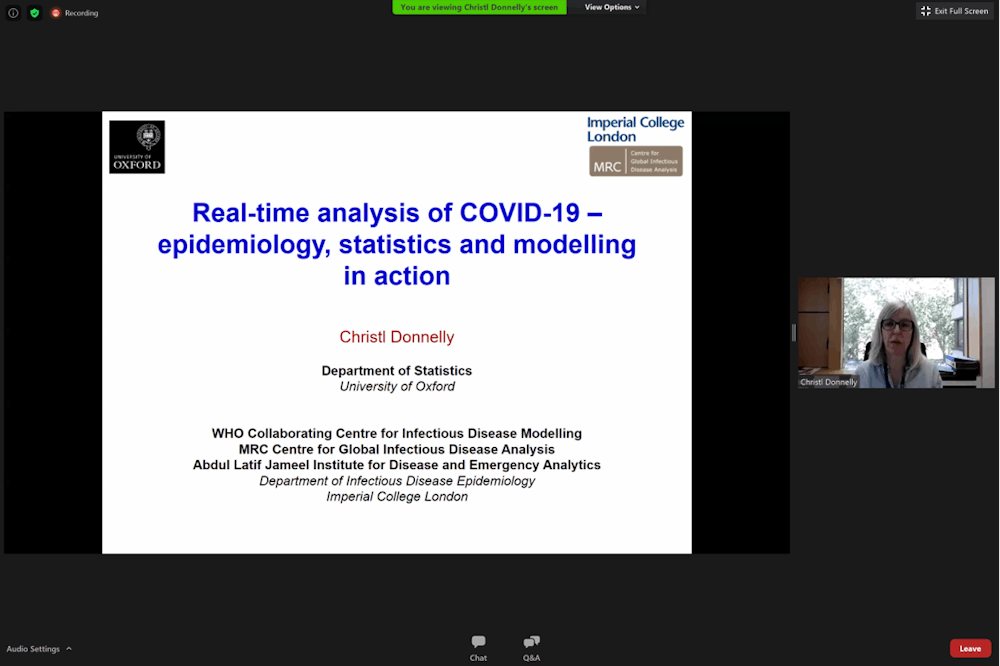Professor and statistical epidemiology specialist Christl Donnelly presented her experience tracking COVID-19 to students enrolled in the Carolina Away program and the public on Monday — all the way from Oxford.
Donnelly is the deputy head of the department of statistics at Oxford University and a specialist in statistical epidemiology at Imperial College London. The presentation was part of the “Data Science for COVID-19” course, designed by Richard Smith, a professor in the UNC Department of Biostatistics. Smith said the course is part of the Carolina Away COVID Investigations and Learning Community.
Donnelly was introduced by Chancellor Kevin Guskiewicz, who cited UNC's ranking as the top university in the United States in terms of the impact of COVID-19 research.
Donnelly is part of the Imperial College MRC Centre for Global Infectious Disease Analysis, as well as the World Health Organization Collaborating Centre for Infectious Disease Modelling.
As part of these groups, she has provided informed estimates of the total number of cases in the world, calculated COVID-19’s reproduction number — the average number of people infected by one case of the virus — and helped modify simple mortality rate calculations to be more accurate.
Calculating total number of cases
In January, Donnelly said she and her team set out to estimate how many cases of COVID-19 there were in the world.
“Only a couple of dozen cases had been identified in China,” Donnelly said. “And yet, we were seeing cases being detected outside of China in travelers.”
She said the team used a variety of factors in its calculations, such as the number of cases outside of China, the probability that a case would be detected outside of China, the incubation period of the virus, the average time of case detection and the daily probability of international travel, using the number of daily passengers leaving Wuhan Tianhe International Airport.



